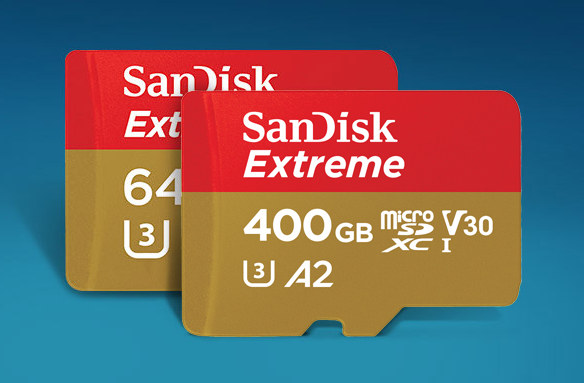Last year, the SD association introduced Class A2 application performance class for SD cards designed for optimal performance when running an OS or programs from the cards thanks to fast read and write random I/O, specifically 400O IOPS minimum for read operations, 2000 IOPS minimum for write operations.
Since Class A2 was announced about 18 months ago, I simply assumed Class A2 SD cards were already available, but to my surprise I was wrong, as according to AnandTech, Sandisk Extreme micro SD cards are the first of the kind soon-to-be available commercially.
Sandisk Extreme micro SD card specification:
- Capacity – 64GB, 128GB, 256GB, or 400GB
- Interface – UHS-I
- Sequential Speeds – Read: Up to 160 MB/s; Write: Up to 90MB/s (128GB to 400GB), up to 70MB/s (64GB)
- Random Speeds – Read: >= 4000 IOPS; Write: >=2000 IOPS
- SDA Labels – C10, U3, V30, A2
- Temperature Range – -25 to 80°C
Sandisk – part of Western Digital since 2016 – did not provide performance numbers for random I/O’s, so we can only know the minimum value specified by A2 performance class. The cards also comply with other SDA speed classes namely C10 (10MB/s high Speed mode or faster), U3 speed class (30MB/s minimum write speed) and V30 video speed class (30MB/s minimum write speed).
SanDisk Extreme Class A2 micro SD cards are not the fastest when it comes to sequential read/write speeds, but they’ll be one of the best for random I/O performance which is paramount while running programs. databases, or full operating systems from the SD cards.
Sandisk Class A2 cards are listed for $30.99 (64GB), $57.99 (128GB), $149.99 (256GB) and $249.99 (400GB) on the company’s online shop, although at the time of writing only the 64GB and 256GB microSD cards are in stock. The 128GB card is however sold on eBay for $48.24 and all four capacities can be found on Amazon for $29.90 and up. More details may also be found on Sandisk’s product page.

Jean-Luc started CNX Software in 2010 as a part-time endeavor, before quitting his job as a software engineering manager, and starting to write daily news, and reviews full time later in 2011.
Support CNX Software! Donate via cryptocurrencies, become a Patron on Patreon, or purchase goods on Amazon or Aliexpress





